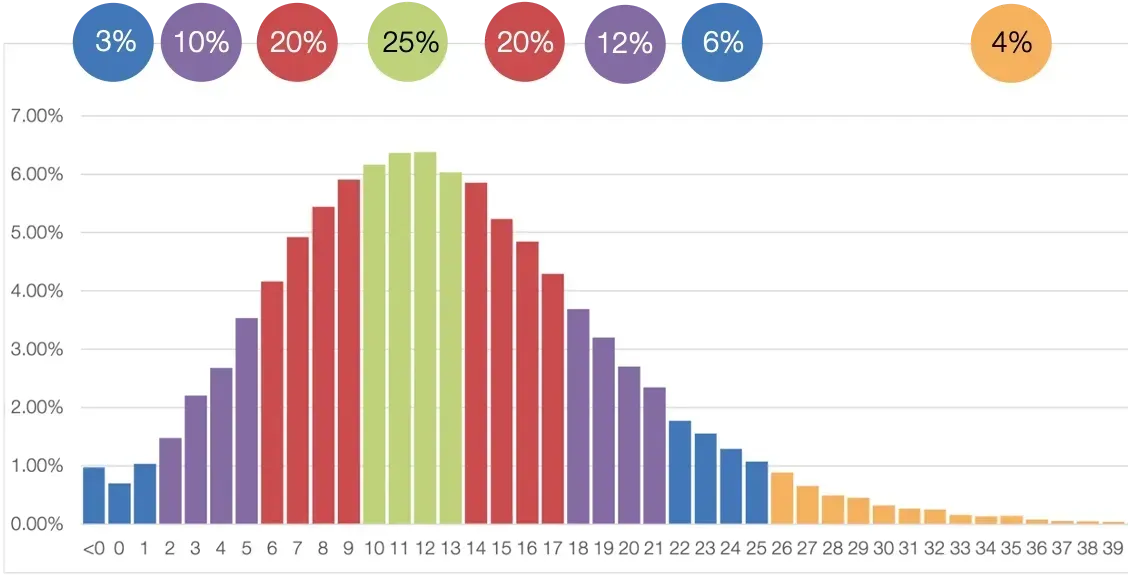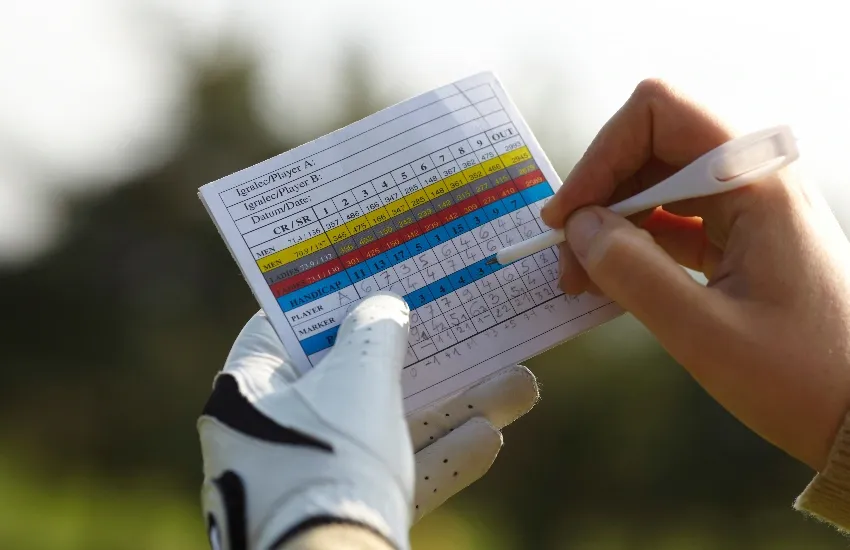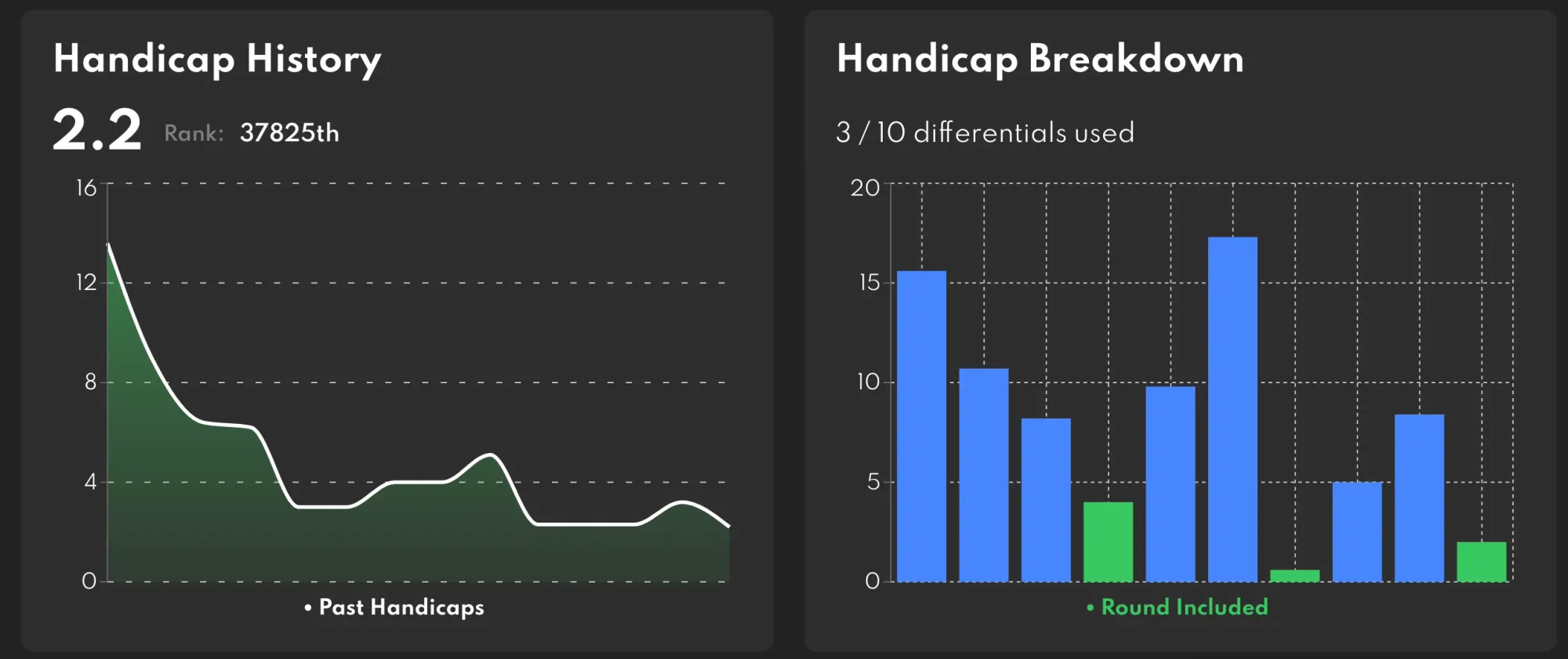A Beginner's Guide to the Handicap System
The handicap system is an integral part of the game of golf, allowing for competition to played amongst golfers with varying skill levels.

The handicap system is an integral part of the game of golf, allowing for competition to be played amongst golfers with varying skill levels. The system itself, however, is flooded with misconceptions. Below you'll learn what a handicap is, how it's measured and steps you can take to obtain a golf handicap.
What is a Golf Handicap?
In short, a player's handicap is an indicator of that particular golfer's skill level. Similar to scoring in golf where the goal is to produce a low score, a lower handicap indicates a more skilled player. The system itself is designed in a way for players of all skill levels to compete against each other on an even playing field.

Course Rating and Slope Rating
Two key components that factor into the Handicap calculation are the Course Rating and Slope Rating. Effectively, these are indicators of the difficulty of the golf course and helps to factor that into the Handicap calculation.
The Course Rating is used to assess the difficulty of a golf course for a scratch (0 Handicap) golfer. On a Par 72 golf course, a Course Rating of 73.1 indicates that a scratch golfer should expect to have an average score of 73.1 on his or her better days. A Course Rating higher than the Par of the golf course indicates a more challenging test.
Conversely, the Slope Rating is a bit more nuanced as it compares the relative difficulty of the course from a scratch golfer to a bogey golfer (Handicap between 20-24). A Slope Rating of 113 is considered to be average, and higher Slope Rating means a greater difference in difficulty between bogey and scratch golfers. Courses that present a lot of long carries and hazards will tend to have higher Slope Ratings as they present more opportunities for average golfers to rack up high scores.
How is a Golf Handicap Calculated?
The handicapping system is standardized by the World Handicap System set forth by both the USGA and R&A, and your Handicap Index is a rolling value based on your previous 20 rounds of golf. For any given round, the system creates a "Score Differential" using the following formula: (Adjusted Gross Score - Course Rating) x 113 / Slope Rating where Adjusted Gross Score = Gross Score + (Course Handicap - Par).
Note: when calculating the Adjusted Gross Score, the maximum score that can be entered on any single hole is a net double bogey.
Your official Handicap Index is then formed by taking the average of the 8 best "Score Differentials" over the previous 20 rounds.
Got all that? Luckily, there are multiple services that can keep track of your Handicap Index for you. The majority of golf clubs offer handicap tracking as part of your membership, or for those that are not members at a club, you can sign up for a handicap through your local State Golf Association. Other scorekeeping apps like TheGrint and 18 Birdies also offer Handicap tracking as part of their platforms.

Why Do I Need a Golf Handicap?
While having a registered Handicap Index is certainly not a prerequisite for playing the game of golf, it's an important piece for golfers that want to compete and improve their game. Tracking your handicap can be motivating and rewarding, as it allows you to see how your game has evolved and improved.
Handicaps also allow golfers of different skill levels to compete fairly against each other. By adjusting scores based on handicaps, players can enjoy competitive matches regardless of their skill level. And for those that may be interested in competing in local tournaments, charity outings or corporate events, many of these events will require some form of Handicap in order to register.

Does GOLF+ have a Handicap System?
Yes! At GOLF+, we provide our players with their own in-game Handicap Index using the same methods as the World Handicap System. Players have Handicaps for each level of game difficulty (Novice, Amateur and Pro) in order to track your progression over time.
The one difference, however, is that GOLF+ actually adjusts the Course Rating based a variety of factors such as: pin locations, wind and green speeds. The standard handicapping system only makes rating adjustments based on the tees that are played.


